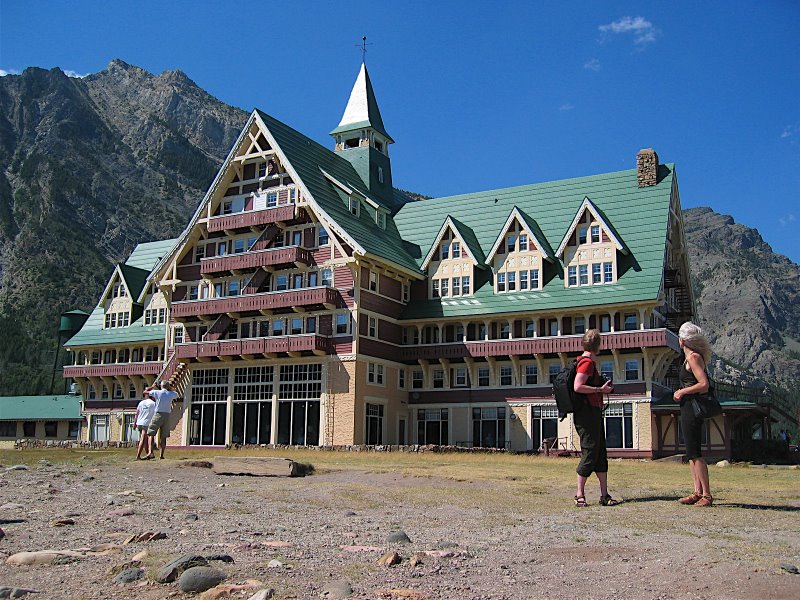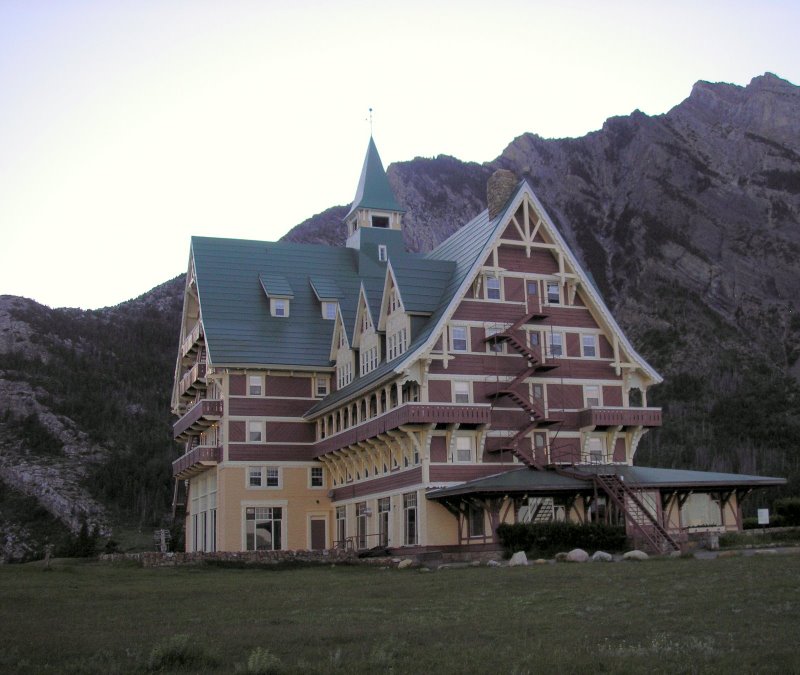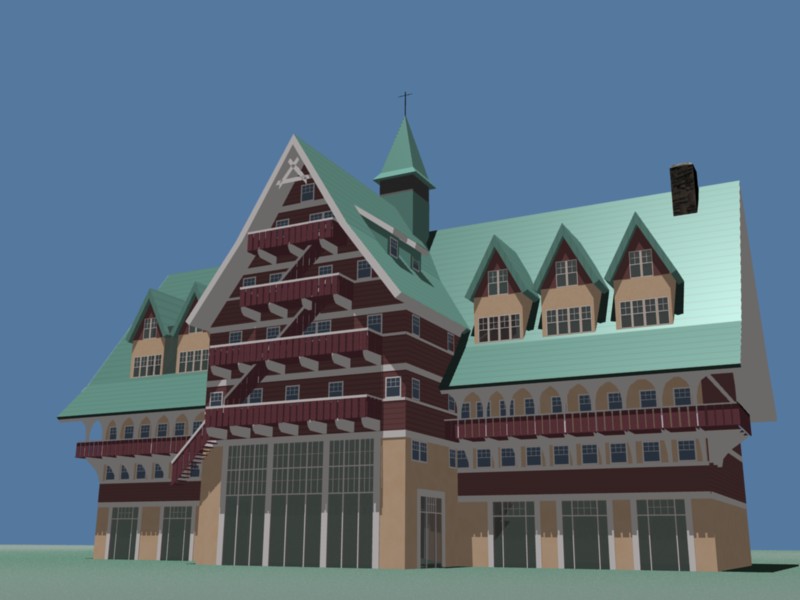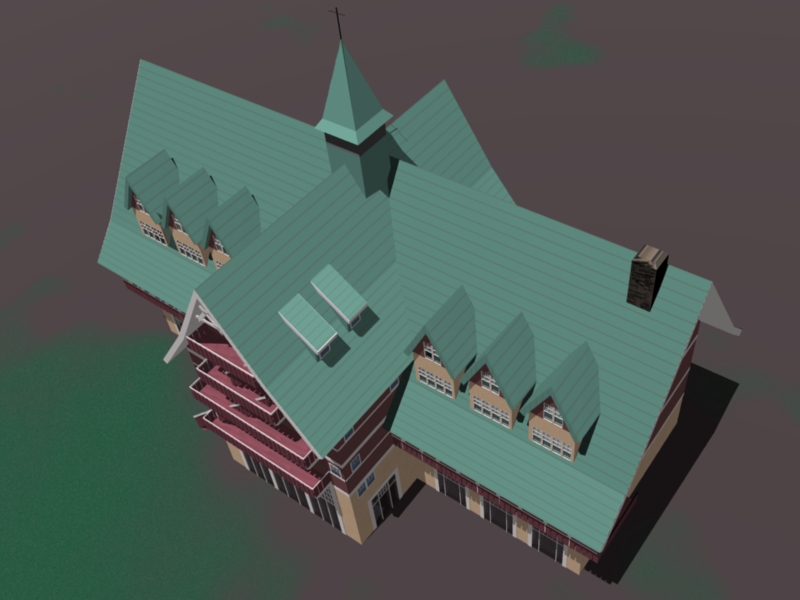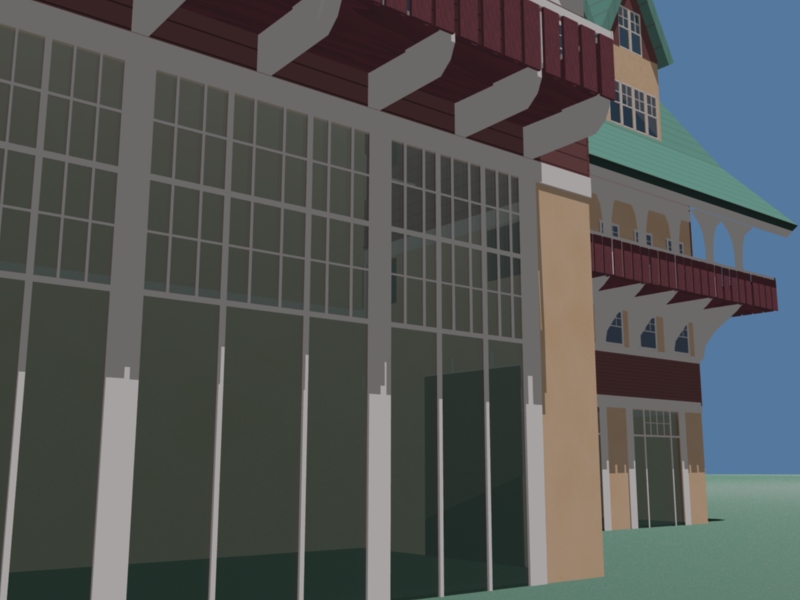Computer Science 3710 - Ray Tracing Project
Prince of Wales Hotel in Waterton
These images were made using Blender 2.45 on my Windows desktop PC. Arriving at these images was a long and arduous journey
through a digital world of pain and torment. I originally began by using
Povray and then Moray, trying to produce a convincing Calgary Tower. I got
something that looked pretty good, and texturing was certainly easier, but I
was not completely happy with the final product. It appeared, that to get
something that looked like a realistic scene, I would need to make the
surrounding buildings as well. I wasn't ready to do quite that much work. I then switched to Blender, but almost gave up since it
ran so abysmally slow on my laptop--the ray-tracing equivalent of dial-up Internet.
My desktop saved the day and I was off to the races. I spent a lot of time doing blender tutorials trying to
figure out lighting and texturing. I don't know if I made a lot of progress,
but I knew enough to put something together. The level of detail in this
building proved the most daunting task as leaving out certain details made
the overall picture look unfinished. The textures were extremely difficult.
If you look closely (I am being generous) you will see the textures that I
just never got right. I did use a few image textures for the roof and the
wood paneling. It took forever to figure out how to attach them to the
objects in the right orientation. If I spent a little more time on multiple
textures for objects I think I could get a little more realism. I am quite happy with the finished product. I must say
that the windows proved the most difficult. In the end I stopped producing
the see-through variety, but I got enough, especially on the lower level to
give a measure of reality to the scene. My most exciting discovery was in the
information that Blender can export a .x file format which can easily
incorporate a produced 3D image into a DirectX program. I managed to get the
standard Blender monkey head spinning in a full-screen windows program. Cool! You might notice in the above shot and the aerial image
below that the front stairs lead to nowhere. This was an artistic statement
which says in effect that the image will never be done. There is too much
detail that can still be added. The terrain and the sky still need to be done
and numerous architectural details that I simply did not have the time to
finish. The beautiful thing though is that at the conclusion of this project
I feel confident that I could do any of these. I am a leprous artist at best,
but this medium at least gives me a little hope. <
>
|
